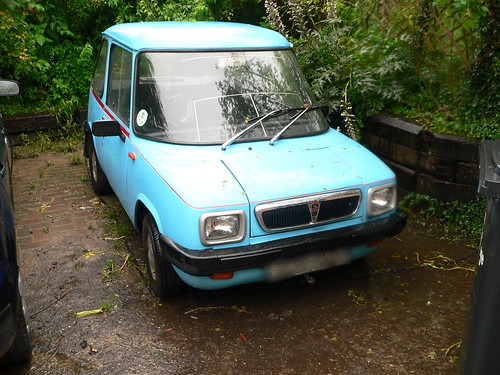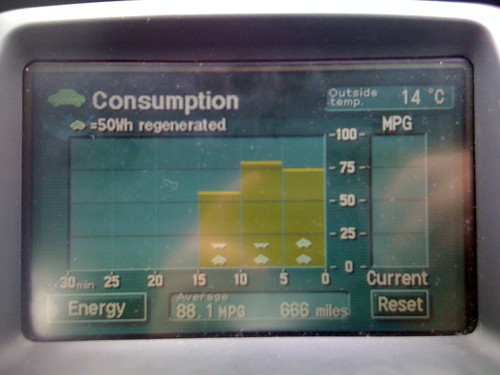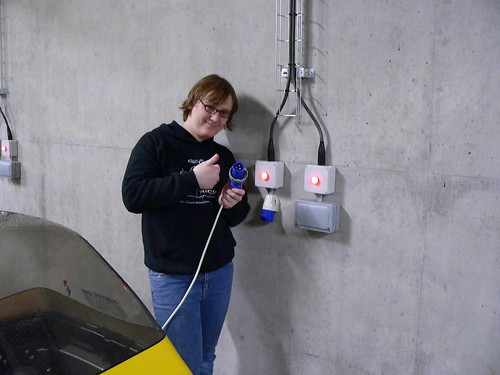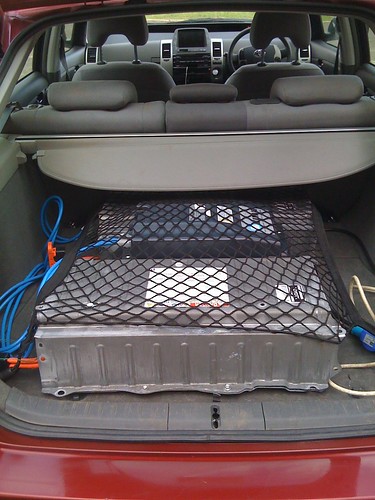And Like That, We’re Nearly Back To Work.
We’re Stuck With Starlink For Now, And I Feel Like a Hypocrite
Please sir! Can we have more?
Making a PHEV Prius battery pack.
Today we’re taking a step away from the regular www.aminorjourney.com posts and looking at a personal project of mine – Velma, the Plug in Prius.
This weekend the weather has been nice enough to finally take the additional Prius battery packs which have been sitting in Velma’s luggage area and taking up valuable space.
Obviously the above arrangement isn’t great in anyone’s eyes. We need to figure out a more secure and permanent way of storing the two additional Prius batteries.
Read on after the jump to see the new battery arrangement take place.
Looking ten years into the future of plug ins.
Ten years ago, we were still in the last great EV revolution. The EV1 was still on the road (although GM had by this time decided to no-longer make them), and the general public were getting used to seeing funky charging stations. At least, they were used to that in the select areas of the US where electric vehicles were being used.
Europe too, was undergoing something of a mini-revolution. The french conglomeration of Citroen, Peugeot and Renault were making commercially available electric cars and vans. A few years later, just like the EV1, RAV4EV and Ford Th!nk to name but a few, these vehicles disappeared from the market.
Here we are, in 2009, with lots of exciting developments in the world of plug in vehicles. As someone heavily involved with plug in vehicles it feels to me as if we’re just about to enter a truly golden age of the electric vehicle. But we’ve seen this kind of activity ten years ago. How do we know it’s not going to end in tears again?

More after the jump.
Playing the mileage game.
Former CMO of Tesla Motors Darryl Siry, (now a Senior Analysist of Cleanteach at Peppercom) has called for auto makers to be more clear about the abilities and range of their electric and plug-in vehicles. It’s a subject I‘ve touched on in the past, but felt it worth revisiting considering the excellent article.
It’s a common problem with all EVs on the market today. Like their petrol-powered counterparts, sales teams just can’t help themselves when it comes to providing optimistic range figures for their vehicles. It’s common practice, but as Darryl eloquently argues, it could jeopardize the very heart of the EV industry before it’s fully got off the ground.
The public don’t like being made to feel that they are being lied to. And while, on a purely technical level, no car company is lying when it claims a car can do 56 mpg on it’s urban cycle, or that the range of that funky new EV is a salivating 200 miles. But at the same time the auto industry doesn’t like to tell you the full story.

More after the jump.
More from the Citroen Ev’ie. A video from the Electric Car Corporation.
Relax! It’s okay to plug in!
Since the UK government announced that they plan to launch a scheme in 2011 to give new car buyers up to £5,000 towards the purchase of a fully electric or plug-in hybrid car there’s been quite a lot of press coverage for electric cars. Some good, and some bad.
Amongst those who seek to discredit the environmental, economic and social impact of electric vehicles there have been many who have tried to scaremonger the general public that a nation of electric vehicles and plug-in hybrids will cause mass power outages of a scale big enough to rival the famous brown-outs of the East Coast United States of the early part of this century. If these naysayers were to be believed a whole country of electric cars plugging in would be catastrophic for the rest of society.
Well, guess what? A study, conducted by LandRover-Jaguar, Ricardo, Amberjac Projects and E.O.N, has concluded that the UK PowerGrid is capable and ready to support a large amount of electric and plug in cars already. So next time you plug in, you know you’re not denying anyone some much-needed electricity and causing mass brown-outs. That’s nice, isn’t it?

Read more after the jump.



